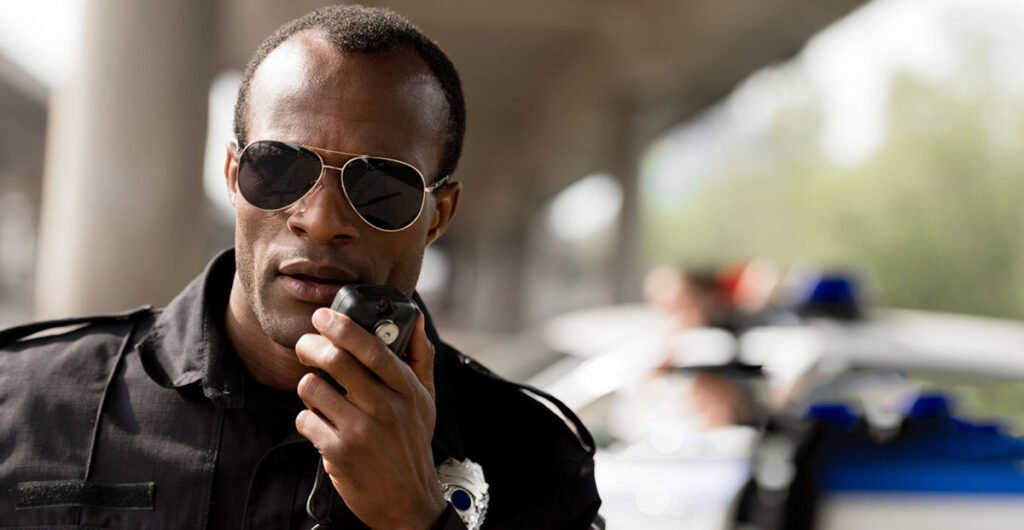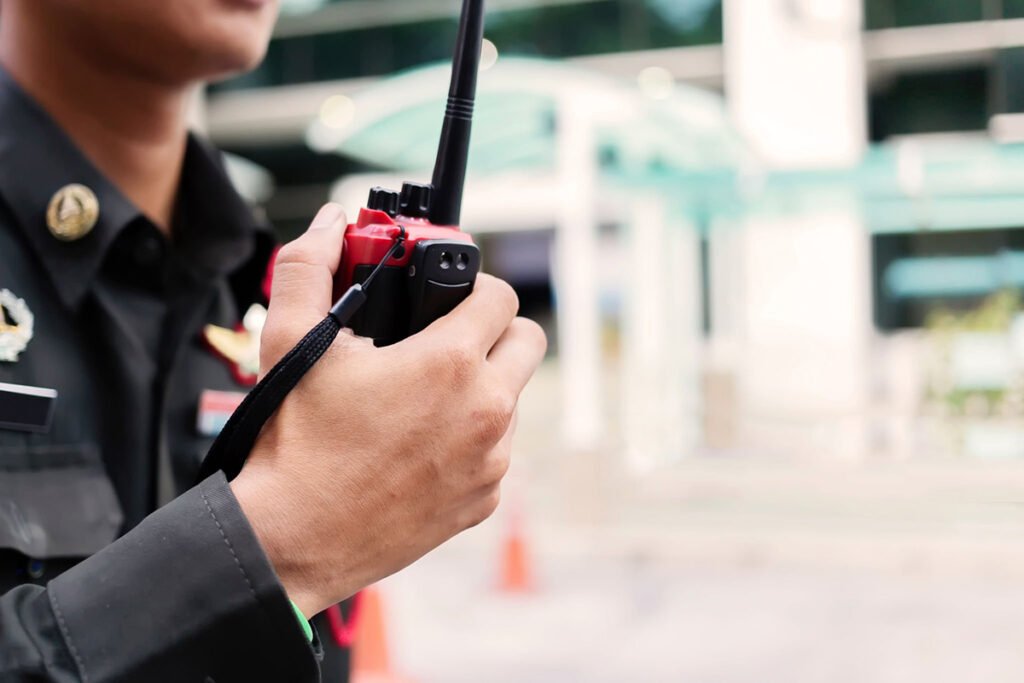Two Way Radio Solution for Police
Top-Rated Two Way Radio Solution for Police: Best Communication Systems Reviewed
Introduction to Two Way Radio Solutions for Law Enforcement

In high-pressure, life-threatening situations, effective communication can be the difference between order and chaos. For police departments around the world, a two way radio solution for police remains the gold standard in real-time, secure communication. Despite rapid advancements in smartphones and digital apps, radios are still the go-to choice for officers in the field. Why? They’re fast, reliable, rugged, and tailored for mission-critical operations.
From coordinating responses during emergencies to ensuring team-wide situational awareness, the role of two way radios in law enforcement is essential. They provide the link between dispatch, patrol officers, supervisors, and specialized units like SWAT or K9. Let’s dive into why two way radios continue to be a vital tool for police agencies.
Why Police Departments Still Rely on Two Way Radios in the Digital Age
Even with the rise of body cams, smartphones, and AI tools, police officers still turn to their two way radios for daily operations. The reasons are simple yet critical:
- Instant Connectivity: Unlike cell phones, radios don’t rely on cellular networks. They offer push-to-talk capabilities with zero dialing delays.
- Mission-Critical Reliability: Radios are engineered to work in harsh conditions—whether it’s pouring rain or in remote forested areas.
- Encrypted Communication: Sensitive conversations need protection. Police radios often use AES encryption to keep communication secure.
- No Downtime: Radios don’t suffer from battery-draining apps or software updates that slow things down.
Key Features of a Reliable Two Way Radio Solution for Police
When choosing a two way radio system for law enforcement, specific features are non-negotiable. Here’s what modern police radios offer:
Durability and Ruggedness
Police radios are built tough. Most are MIL-STD and IP-rated, meaning they can survive drops, water exposure, and extreme temperatures.
Secure and Encrypted Communication
Advanced radios come with end-to-end encryption to ensure all transmissions are secure and private—essential for undercover or tactical operations.
Long Battery Life for Extended Duty
With officers working 8–12 hour shifts, long-lasting lithium-ion batteries are a must. Many radios include backup power packs and smart charging stations.
Real-Time GPS and Location Tracking
This feature is key for dispatchers to track officers in real-time during pursuits or emergencies.
Noise Cancellation and Clear Audio
Radios like Motorola APX or Kenwood NX Series offer audio clarity even in high-noise environments such as protests, traffic stops, or large events.
Types of Two Way Radios Used by Police Forces
Depending on the department’s size, terrain, and operational needs, police may use different types of two way radios:
Handheld (Portable) Radios
These are compact, lightweight, and designed for officers on the move. They’re usually clipped to the uniform or belt.
Mobile Radios for Vehicles
Mounted inside patrol cars, these radios offer higher power output and greater range—ideal for highway patrol or rural policing.
Base Stations for Dispatch Centers
These are the backbone of police radio networks. Base stations manage communications and integrate with emergency services and databases.

Top Brands Offering Two Way Radio Solutions for Police
Choosing a trusted manufacturer is crucial for long-term reliability and support. Top vendors include:
Motorola Solutions
Their APX series is the most widely used among law enforcement. Offers P25 compliance, GPS, and secure encryption.
Kenwood Communications
Known for budget-friendly yet high-quality radios with digital and analog compatibility.
TSHICOM Corporation
Specializes in tactical and interoperable radios used by SWAT and federal agencies.
Hytera Communications
A rising player offering DMR radios with modern interfaces and strong signal processing.
Comparison: Analog vs. Digital Two Way Radios in Law Enforcement
| Feature | Analog Radios | Digital Radios |
|---|---|---|
| Audio Quality | Prone to static | Crystal-clear, even at range |
| Battery Life | Shorter | Longer per charge |
| Features | Basic | GPS, encryption, messaging |
| Cost | Cheaper | More expensive initially |
| Security | Limited | AES256 encryption possible |
Digital radios are now the standard for modern police departments, especially those transitioning to P25 Phase II or DMR networks.
How Two Way Radios Enhance Officer Safety and Response Time
When seconds matter, a radio is often the fastest lifeline. Features like one-touch emergency alerts, man-down sensors, and real-time location data allow backup to arrive quicker and help minimize risk.
Radios can also be programmed for team talk groups, allowing officers to communicate within specialized units or across departments during joint operations.
Integrating Radios with Police Dispatch and Emergency Systems
Today’s systems aren’t standalone. Many two way radios are integrated with CAD (Computer-Aided Dispatch), RMS (Records Management Systems), and AVL (Automatic Vehicle Location) platforms.
This integration allows for faster data retrieval, intelligent routing of calls, and seamless coordination with EMS and fire departments.
Key Considerations When Choosing a Two Way Radio System for Police
Selecting the right system involves more than just choosing a brand. Departments must evaluate a combination of technical and logistical factors.
Coverage Area and Range
Urban, suburban, and rural policing each present unique range challenges. While UHF radios perform well in buildings, VHF radios are better for open rural areas. Departments may need to combine both or use repeater systems to expand coverage.
Frequency Bands (VHF, UHF)
- VHF (Very High Frequency): Offers longer range in open areas but struggles with walls and buildings.
- UHF (Ultra High Frequency): Ideal for dense urban environments, penetrates concrete, and suits building interiors better.
- 700/800 MHz: Common in public safety systems, especially P25 digital radios in major cities.
Budget and Cost of Ownership
Beyond upfront costs, departments must account for:
- Licensing fees
- Maintenance and firmware updates
- Accessories (mics, chargers, batteries)
- Integration with existing systems
Maintenance and Support for Police Radio Systems
Reliable communication demands consistent maintenance. This includes:
- Routine software and firmware updates
- Battery health checks
- Antenna inspections
- Device diagnostics
Vendors like Motorola and Kenwood often offer support contracts that include 24/7 technical help, on-site service, and hardware replacement plans.
Case Study: Successful Implementation of a Two Way Radio Solution in a Police Department
The City of Plano, Texas, faced outdated analog systems that caused coverage gaps and poor communication during emergencies. In 2023, the department adopted a P25-compliant digital radio system from Motorola Solutions.
Results:
- Coverage improved by over 30% across city limits.
- Officers experienced clearer communication with fewer dead zones.
- Emergency response time dropped by 12% due to better coordination.
- The system integrated seamlessly with neighboring agencies, improving multi-jurisdictional responses.
This transformation showcased how modern radio solutions can directly impact community safety and officer performance.
Regulations and Compliance: FCC Rules for Police Radios
Police departments in the U.S. must comply with Federal Communications Commission (FCC) regulations. This includes:
- Licensing for specific frequency bands
- Operating within power limits
- Ensuring interoperability across agencies (especially for emergencies)
Agencies are encouraged to adopt Project 25 (P25) standards, which improve cross-agency communication.
Future Trends in Police Communication Technology
The future of two way radios is promising, with many innovations on the horizon:
- LTE Radio Hybrids: Combining cellular networks with traditional radio for extended range.
- AI Voice Assistants: Helping officers transcribe notes, translate languages, or access records.
- Body-worn Radios: Fully integrated into vests or body cameras to reduce gear load.
- Cloud-connected Dispatch Systems: Improving real-time analytics and data exchange.
These developments ensure that two way radios will remain vital even as new technologies emerge.
Common Challenges in Police Radio Communications and How to Solve Them
| Challenge | Solution |
|---|---|
| Dead zones in remote areas | Use of signal repeaters and LTE backup |
| Cross-agency communication issues | Adopt P25 standards and shared frequencies |
| Poor audio in high-noise situations | Use radios with advanced noise cancellation |
| Battery failure mid-shift | Smart chargers and hot-swappable batteries |
| Encryption breaches or hacking | Use of end-to-end AES256 encryption and regular updates |
FAQs About Two Way Radio Solutions for Police
1. What is the best two way radio brand for police use?
Motorola Solutions is widely regarded as the leader, especially for P25-compliant systems. However, Kenwood, TSHICOM, and Hytera also offer solid solutions depending on the department’s needs.
2. Can police radios be hacked?
While rare, unencrypted radios can be intercepted. That’s why departments use digital systems with AES encryption to protect sensitive information.
3. What is the average lifespan of a police radio?
With proper maintenance, a high-quality police radio can last 5–7 years, although batteries and antennas may need periodic replacement.
4. Do two way radios work without cellular networks?
Yes. Unlike smartphones, radios operate on independent frequency bands and don’t rely on cell towers. This is crucial in disaster zones where networks may be down.
5. How much does a two way radio system cost for a police department?
A complete system can range from $300,000 to over $2 million, depending on the number of users, features, coverage area, and infrastructure needs.
6. Are there grants available to help fund radio upgrades?
Yes. Agencies can apply for federal and state grants like DHS SAFECOM and COPS grants to support radio system modernization.
Choosing the Best Two Way Radio Solution for Your Force
When it comes to public safety, there’s no room for unreliable communication. A dependable two way radio solution for police can empower officers, protect communities, and streamline emergency response. As digital systems evolve and integrate with broader technologies, radios will remain a core part of law enforcement operations for years to come.
Before making a purchasing decision, departments should assess their coverage needs, integration potential, security requirements, and long-term support plans. Partnering with reputable vendors and ensuring FCC compliance will pave the way for a safer, more connected future in policing.
